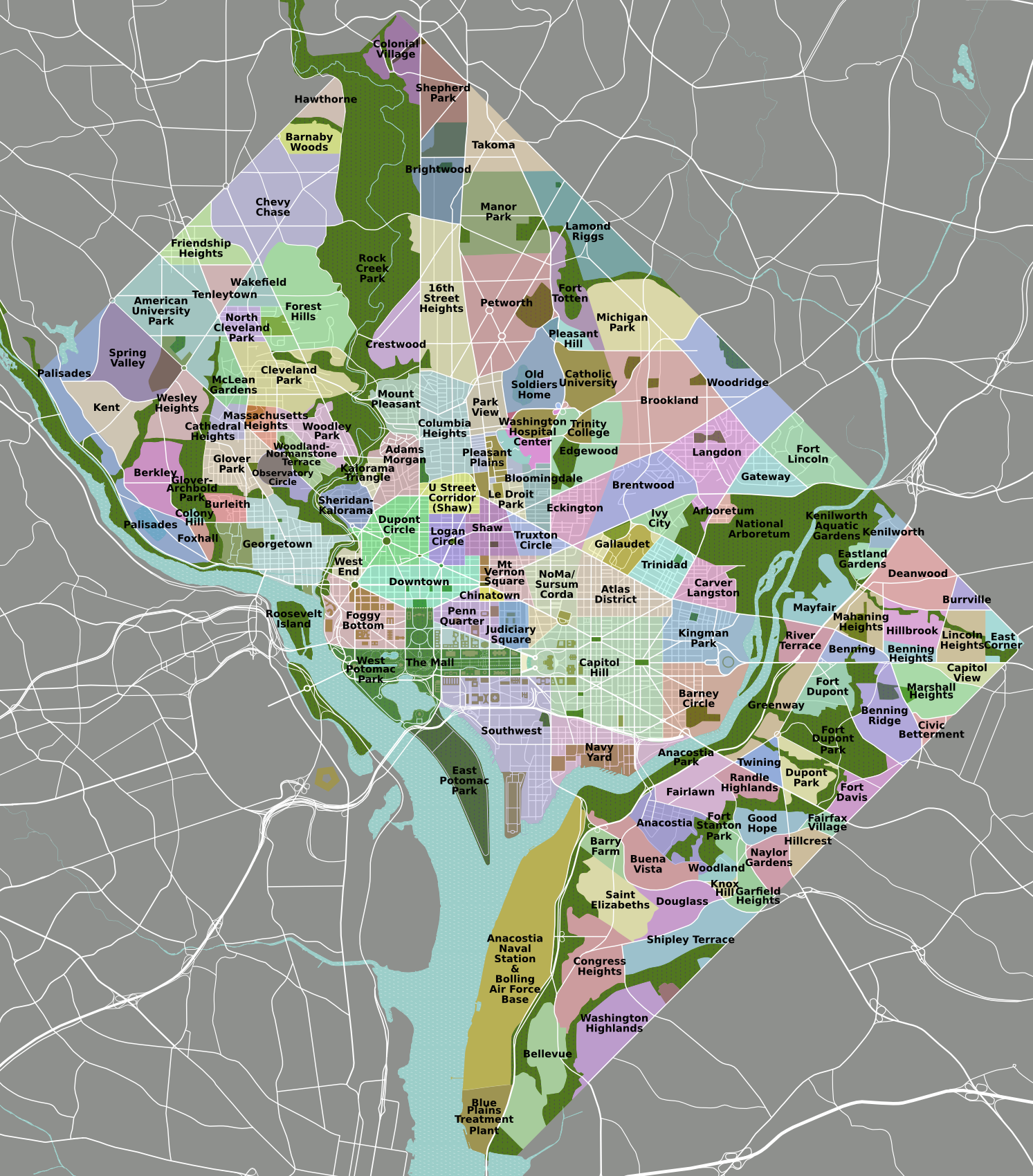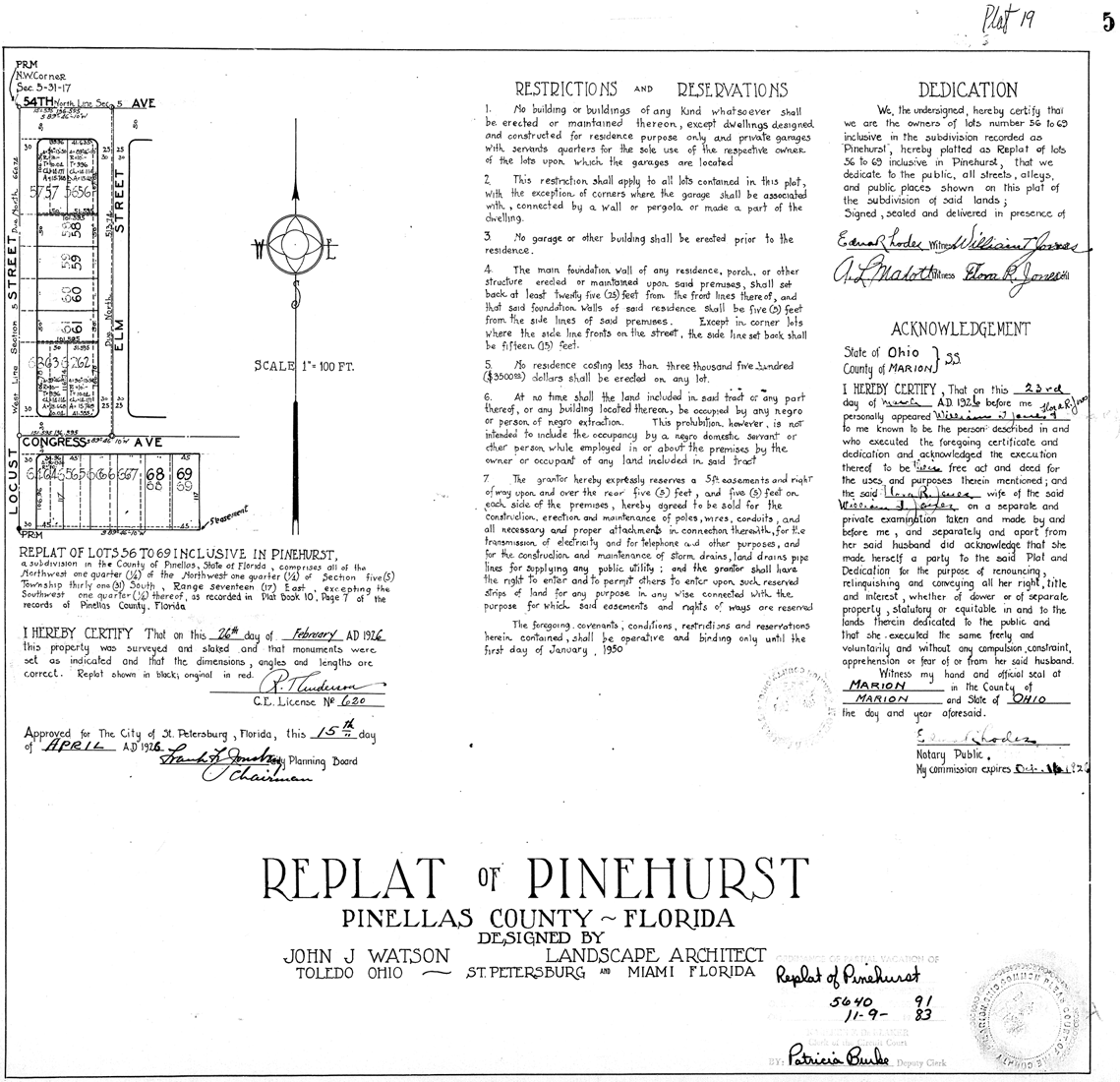|
Wesley Heights, Washington, D.C.
Wesley Heights is a small affluent neighborhood of Washington, D.C. situated south of Spring Valley, Washington, D.C., Spring Valley. Wesley Heights was founded in 1890 by a land speculation group led by John Waggaman and funded primarily by Charles C. Glover; Wesley Heights was further developed by the brothers William C. and Allison N. Miller during the 1920s. Modern-day Wesley Heights is bordered by Massachusetts Avenue (Washington, D.C.), Massachusetts Avenue (on the east), Streets and highways of Washington, D.C., Nebraska Avenue (on the north), Battery-Kemble Park (on the west) and Glover Parkway (on the south). Foxhall (Washington, D.C.), Foxhall Road and New Mexico Avenue are the main roadways passing through Wesley Heights. To protect the character of the original historic housing design of Wesley Heights, the Wesley Heights Zoning Overlay was developed and approved by District of Columbia Zoning Commission on July 13, 1992, at the urging of the Wesley Heights Historica ... [...More Info...] [...Related Items...] OR: [Wikipedia] [Google] [Baidu] |
List Of Neighborhoods Of The District Of Columbia By Ward
Neighborhoods in Washington, D.C., the capital city of the United States, are distinguished by their history, culture, architecture, demographics, and geography. The names of 131 neighborhoods are unofficially defined by the D.C. Office of Planning. Neighborhoods can be defined by the boundaries of wards, historic districts, Advisory Neighborhood Commissions, civic associations, and business improvement districts (BIDs); these boundaries will overlap. The eight wards each elect a member to the Council of the District of Columbia and are redistricted every ten years. As the nation's capital, Washington, D.C.'s local neighborhood history and culture is often presented as distinct from that of the national government. List of neighborhoods by ward Ward 1 :Council of the District of Columbia, Ward 1 Councilmember: Brianne Nadeau :Population (2022): 88,846 *Adams Morgan *Columbia Heights (Washington, D.C.), Columbia Heights *Howard University *Kalorama Triangle Historic District, ... [...More Info...] [...Related Items...] OR: [Wikipedia] [Google] [Baidu] |
American University Park
American University Park is a Neighborhoods in Washington, D.C., neighborhood of Washington, D.C., named for American University. AU Park, as it is often abbreviated, is situated against the Maryland border in the Northwest, Washington, D.C., Northwest quadrant, bounded by Massachusetts Avenue (Washington, D.C.), Massachusetts, Wisconsin Avenue, Wisconsin, Nebraska, and Western Avenues. Tenleytown and Friendship Heights lie to the east, Embassy Row to the southeast, and Spring Valley, Washington, D.C., Spring Valley to the southwest. Politically, it is part of Neighborhoods in Washington, D.C.#Ward 3, Ward 3 and Advisory Neighborhood Commission 3E. This neighborhood includes some of the highest elevations in the city and is close to the District's highest point in neighboring Tenleytown at (the city's lowest point is sea level, on the banks of the Potomac River). Developed in the 1920s by the W.C. and A.N. Miller, which also developed Spring Valley and Wesley Heights, the neigh ... [...More Info...] [...Related Items...] OR: [Wikipedia] [Google] [Baidu] |
Washington Monument
The Washington Monument is an obelisk on the National Mall in Washington, D.C., built to commemorate George Washington, a Founding Fathers of the United States, Founding Father of the United States, victorious commander-in-chief of the Continental Army from 1775 to 1783 in the American Revolutionary War, and the first president of the United States from 1789 to 1797. Standing east of the Lincoln Memorial Reflecting Pool, Reflecting Pool and the Lincoln Memorial, the monument is made of Gneiss, bluestone gneiss for the foundation and of granite for the construction. The outside facing consists, due to the interrupted building process, of three different kinds of white marble: in the lower third, marble from Baltimore County, Maryland, followed by a narrow zone of marble from Sheffield, Berkshire County, Massachusetts, and, in the upper part, the so-called Cockeysville Marble. Both "Maryland Marbles" came from the "lost" Irish Quarry Town of "New Texas". It is both the world's tall ... [...More Info...] [...Related Items...] OR: [Wikipedia] [Google] [Baidu] |
Potomac River
The Potomac River () is in the Mid-Atlantic (United States), Mid-Atlantic region of the United States and flows from the Potomac Highlands in West Virginia to Chesapeake Bay in Maryland. It is long,U.S. Geological Survey. National Hydrography Dataset high-resolution flowline dataThe National Map. Retrieved August 15, 2011 with a Drainage basin, drainage area of , and is the fourth-largest river along the East Coast of the United States. More than 6 million people live within its drainage basin, watershed. The river forms part of the borders between Maryland and Washington, D.C., on the left descending bank, and West Virginia and Virginia on the right descending bank. Except for a small portion of its headwaters in West Virginia, the #North Branch Potomac River, North Branch Potomac River is considered part of Maryland to the low-water mark on the opposite bank. The South Branch Potomac River lies completely within the state of West Virginia except for its headwaters, which lie i ... [...More Info...] [...Related Items...] OR: [Wikipedia] [Google] [Baidu] |
Blue Ridge Mountains
The Blue Ridge Mountains are a Physiographic regions of the United States, physiographic province of the larger Appalachian Highlands range. The mountain range is located in the Eastern United States and extends 550 miles southwest from southern Pennsylvania through Maryland, West Virginia, Virginia, North Carolina, South Carolina, Tennessee, and Georgia (U.S. state), Georgia. The province consists of northern and southern physiographic regions, which divide near the Roanoke River gap. To the west of the Blue Ridge, between it and the bulk of the Appalachians, lies the Great Appalachian Valley, bordered on the west by the Ridge-and-Valley Appalachians, Ridge and Valley province of the Appalachian range. The Blue Ridge Mountains are known for having a bluish color when seen from a distance. Trees put the "blue" in Blue Ridge, from the isoprene released into the atmosphere. This contributes to the characteristic haze on the mountains and their perceived color. Within the Blue Ridg ... [...More Info...] [...Related Items...] OR: [Wikipedia] [Google] [Baidu] |
Richmond, London
Richmond is a town in south-west London,The London Government Act 1963 (c.33) (as amended) categorises the London Borough of Richmond upon Thames as an Outer London borough. Although it is on both sides of the River Thames, the Boundary Commission for England defines it as being in South London or the South Thames sub-region, pairing it with Royal Borough of Kingston upon Thames, Kingston upon Thames for the purposes of devising constituencies. However, for the purposes of the London Plan, Richmond now lies within the West London (sub region), West London region. west-south-west of Charing Cross. It stands on the River Thames, and features many Richmond upon Thames parks and open spaces, parks and open spaces, including Richmond Park, and many protected conservation areas, which include much of Richmond Hill, London, Richmond Hill. A specific Richmond, Petersham and Ham Open Spaces Act 1902, Act of Parliament protects the scenic view of the River Thames from Richmond. Rich ... [...More Info...] [...Related Items...] OR: [Wikipedia] [Google] [Baidu] |
Kate Field
Mary Katherine Keemle Field (pen name, Straws, Jr.; October 1, 1838 – May 19, 1896) was an American journalist, correspondent, editor, lecturer, and actress, of eccentric talent. She never married. Field seemed ready to give an opinion on any subject. She took public stances on controversial topics: opposing the Statue of Liberty as a poor use for an island, opposing the prohibition of alcohol ( temperance), supporting the wine industry, for female clothing reform, opposing the immigration of "scum". She believed the U.S. was the best country in the world, and its people the most civilized. Field was a unique figure in the history of American journalism. She began writing when still in her teens, and her letters to the '' Springfield Republican'' of Massachusetts, and other papers, over the signature of "Straws, Jr.," were well received. She wrote from Washington, D.C., New York City, and Europe. She was one of the few successful paragraphists, and her criticisms of art, mus ... [...More Info...] [...Related Items...] OR: [Wikipedia] [Google] [Baidu] |
Washington Jewish Week
''Washington Jewish Week'' (''WJW'') is an independent community weekly newspaper whose logo reads, "Serving the nation's capital and the greater Washington Jewish community since 1930."Washington Jewish Week website retrieved March 3, 2011. Its main office is located in , a suburb in Howard County. Editorial staff As of March 2011, Richard Greenberg, the paper's associate editor, was also Interim Editor, while the paper searched for a new permanent editor.Guttman, Natha[...More Info...] [...Related Items...] OR: [Wikipedia] [Google] [Baidu] |
History Of The Jews In Washington, D
History is the systematic study of the past, focusing primarily on the human past. As an academic discipline, it analyses and interprets evidence to construct narratives about what happened and explain why it happened. Some theorists categorize history as a social science, while others see it as part of the humanities or consider it a hybrid discipline. Similar debates surround the purpose of history—for example, whether its main aim is theoretical, to uncover the truth, or practical, to learn lessons from the past. In a more general sense, the term ''history'' refers not to an academic field but to the past itself, times in the past, or to individual texts about the past. Historical research relies on primary and secondary sources to reconstruct past events and validate interpretations. Source criticism is used to evaluate these sources, assessing their authenticity, content, and reliability. Historians strive to integrate the perspectives of several sources to develop a ... [...More Info...] [...Related Items...] OR: [Wikipedia] [Google] [Baidu] |
Racial Covenants
A covenant, in its most general and historical sense, is a solemn promise to engage in or refrain from a specified action. Under historical English common law, a covenant was distinguished from an ordinary contract by the presence of a seal. Because the presence of a seal indicated an unusual solemnity in the promises made in a covenant, the common law would enforce a covenant even in the absence of consideration. In United States contract law, an implied ''covenant'' of good faith is presumed. A covenant is an agreement like a contract. A covenantor makes a promise to a covenantee to perform an action ''(affirmative covenant'' in the United States or ''positive covenant'' in England and Wales) or to refrain from an action (negative covenant). In real property law, the term real covenants means that conditions are tied to the ownership or use of land. A "covenant running with the land", meeting tests of wording and circumstances laid down in precedent, imposes duties or restric ... [...More Info...] [...Related Items...] OR: [Wikipedia] [Google] [Baidu] |
1968 Fair Housing Act
The Civil Rights Act of 1968 () is a landmark law in the United States signed into law by United States President Lyndon B. Johnson during the King assassination riots. Titles II through VII comprise the Indian Civil Rights Act, which applies to the Native American tribes of the United States and makes many but not all of the guarantees of the U.S. Bill of Rights applicable within the tribes. (That Act appears today in Title 25, sections 1301 to 1303 of the United States Code). Titles VIII and IX are commonly known as the Fair Housing Act, which was meant as a follow-up to the Civil Rights Act of 1964. (This is different legislation than the Housing and Urban Development Act of 1968, which expanded housing funding programs.) While the Civil Rights Act of 1866 prohibited discrimination in housing, there were no federal enforcement provisions. The 1968 act expanded on previous acts and prohibited discrimination concerning the sale, rental, and financing of housing based on ra ... [...More Info...] [...Related Items...] OR: [Wikipedia] [Google] [Baidu] |
Washington Streetcars
Streetcars in Washington, D.C. transported people across the city and region from 1862 until 1962. The first streetcars in Washington, D.C., were Horsecar, horse-drawn and carried people short distances on flat terrain. After brief experiments with cable car (railway), cable cars, the late-19th-century introduction of electric Tram, streetcars opened development of the hilly terrain north of the old city and in Anacostia into Streetcar suburb, streetcar suburbs. The extension of several of the lines into Maryland and of two Virginia lines across the Potomac River into the District helped expand the city's dense downtown core into today's Washington metropolitan area. By 1901, a series of mergers dubbed the "Great Streetcar Consolidation" had gathered most local transit firms into two major companies: Capital Traction Company and Washington Railway and Electric Company. In 1933, a second consolidation brought all streetcars under one company, Capital Transit. Over the next d ... [...More Info...] [...Related Items...] OR: [Wikipedia] [Google] [Baidu] |










